API Dashboard
The API dashboard features a convenient interface designed to view your usage statistics, featuring both a graph view and a table view. The statistics is classified based on modules, the IP address from which the call was made, method, user or time. This dashboard supports all versions of Zoho CRM APIs.
Zoho CRM API Usage Statistics:
The first section on the Dashboard tab is API Credits Usage. This section gives you the utilized and unutilized credits in a certain time period, and the number of calls you make on an average every day. You can filter the statistics in this section by Last 24 hours, Today, Yesterday, Last 30 days, and Specific Date

Integration Tasks Consume API Credits
The statistics displayed on the API Dashboard also include the number of credits consumed by the integration tasks in functions. For more details, refer to this announcement post on integration tasks consuming api credits.
Note
- There will be a 15-minute delay in refreshing the statistics. However, the number of API calls used are updated immediately.
- Statistics of API usage older than 30 days will be deleted periodically.
The usage statistics help you keep track of the number of API calls that you have made, allowing you to plan usage of Zoho CRM APIs most effectively. The statistics for Zoho CRM APIs are classified in the following ways.
Application based:
You can Zoho CRM API calls from different applications. This classification gives you details of the applications from which Zoho CRM API calls are made.
Graph view:
A doughnut chart represents the top applications for which APIs were called. This chart also displays function names that have used integration tasks, and the number of credits these integration tasks have consumed.
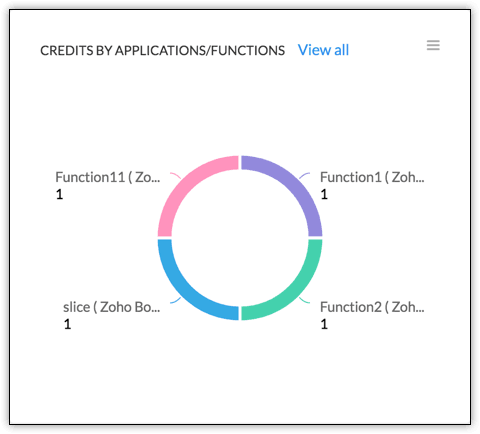
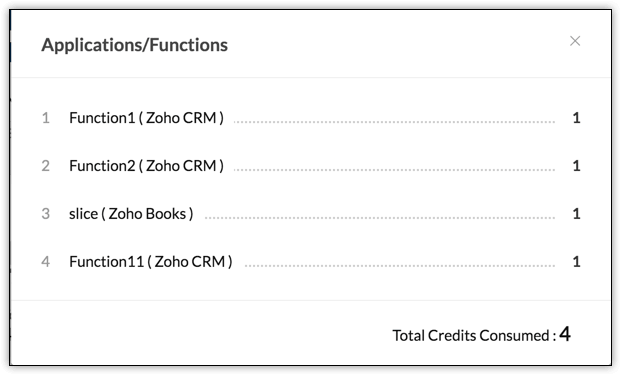
Note
- Click any of the application name to open the statistics for that application in Table view.
- When you click a function's name on the chart, it opens the statistics in table view such as the number of integration tasks used in that function, the module the API calls are made to, and the number of credits consumed.
- You can also click the List view icon to view the five most used applications in the list format.
Table view:
In the table view API credit usage is listed in the columns: User, IP Address, Application.

Module based:
You can view usage statistics based on API calls from modules.
Graph view:
Only the top 5 modules are displayed in the Graph view. Click on any of the module's name to open the statistics in table view with the default column as "Module".
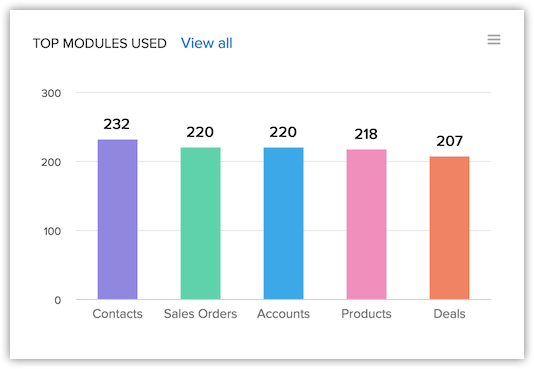
Note
- Click the list view button to view, the top 5 methods from which the API calls are made, can be viewed as a list.

- Click View all to view the statistics of all the modules.
Table view:
The table view is even more precise as it displays all the information regarding the module in one go.
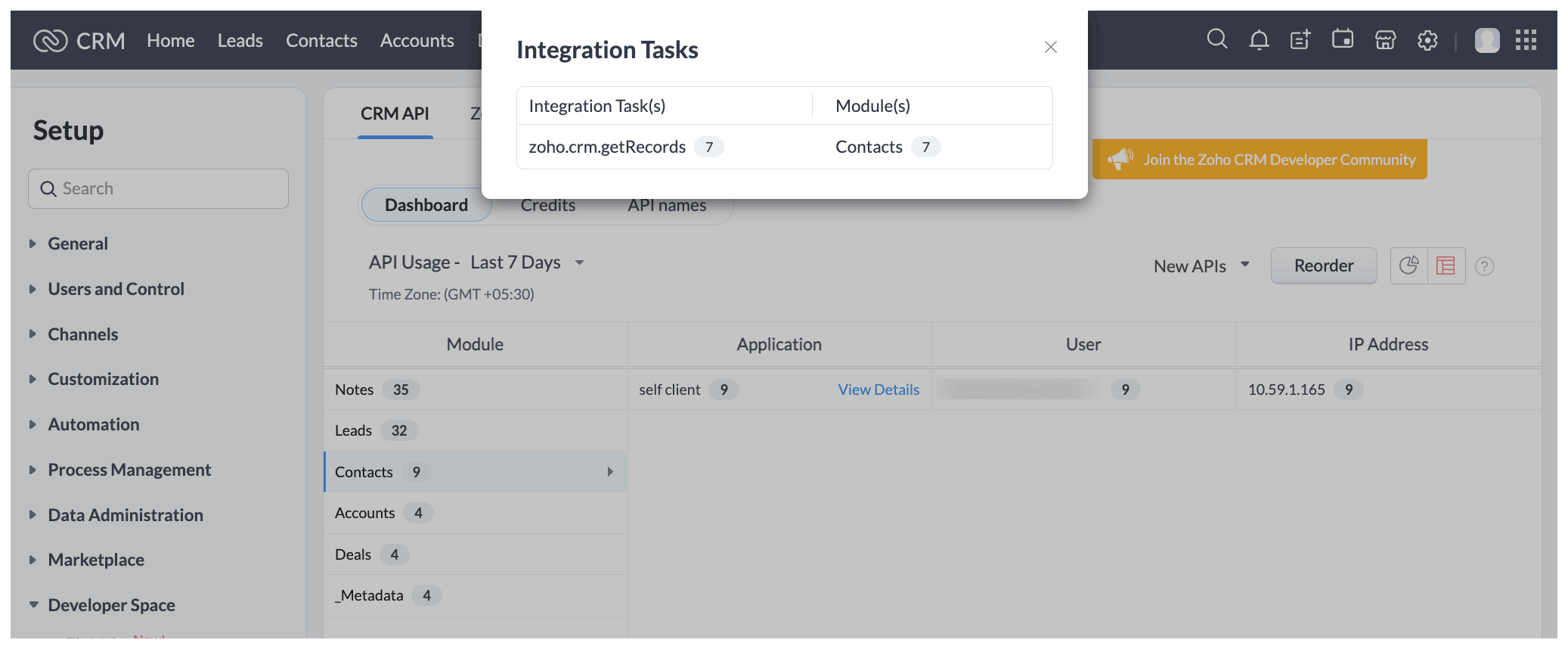
Note
- Click Sort order to sort the table in the required view.
- Hover the pointer to the information and you can see the connection between the records.
- When you click View Details, a pop-up displays the credits consumed by the integration tasks in that module.
IP Address based:
List view:
You can find the statistics based on the User's IP address in the Graph view page. In other words, the statistics are displayed based on the Access points of the Users. The Top 5 IP Addresses classified based on number of API calls made from them, will be displayed. To view all of the User IP addresses, click View all.
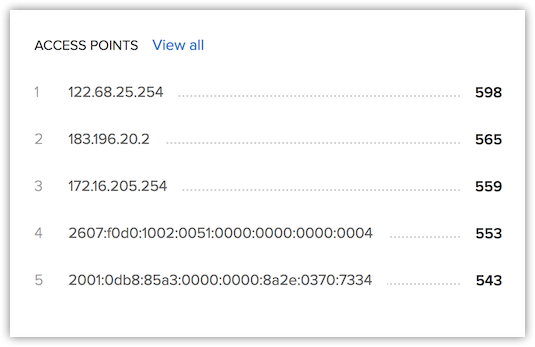
Note
- Click any of the IP addresses to open the Table view with IP address as the default column.
Table view:
In the table view, the IP address column is set as default and the rest of the information is arranged based on it.
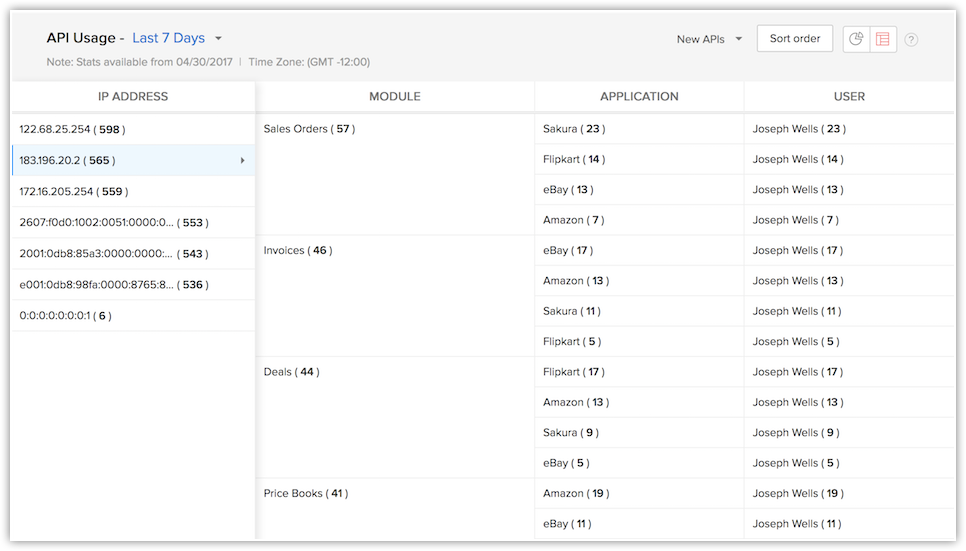
User based:
You can view the usage based on who made the API calls in the Prolific API Users section.
Graph view:
The top three users who made the most API calls are listed in this section.
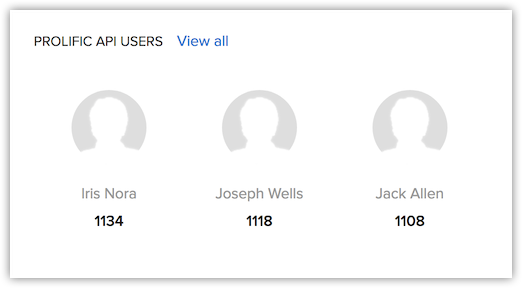
Note
- Click View all, to view the number of API calls made by all individual users.
Table view:
The IP address, method and the module used by a User can be viewed by setting the User column as the default column in the Table view.
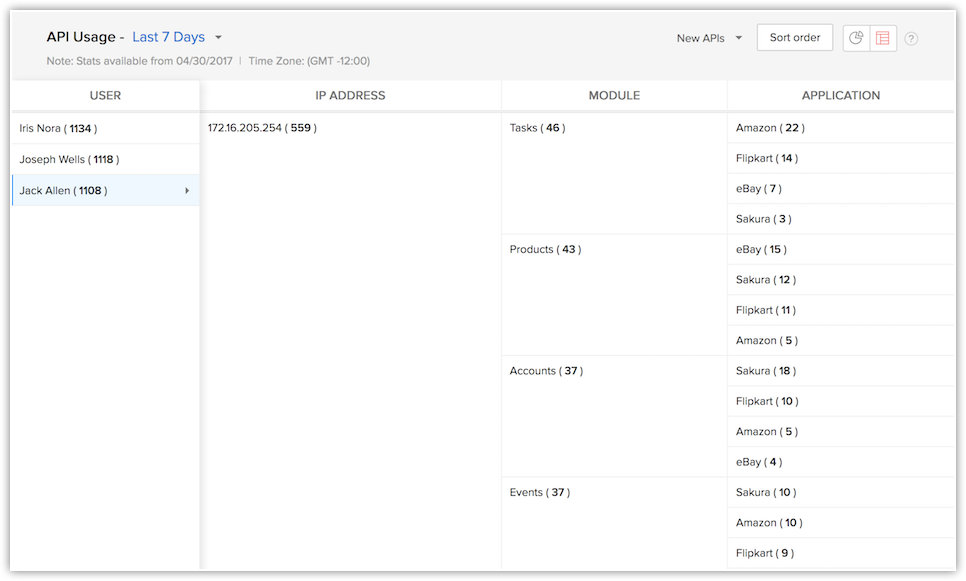
Time based:
One of the easier ways to know your usage and limits would be to take account of the time in which the API calls are made. This is available only in the graph view.
The graph displaying statistics in a single day:

The graph displaying statistics for a range of dates:
